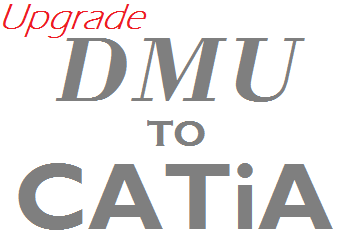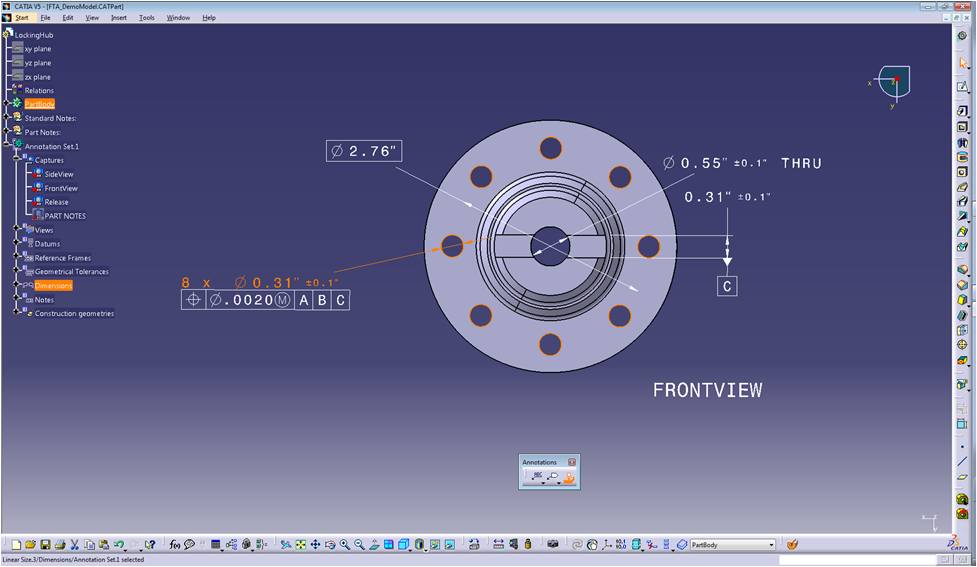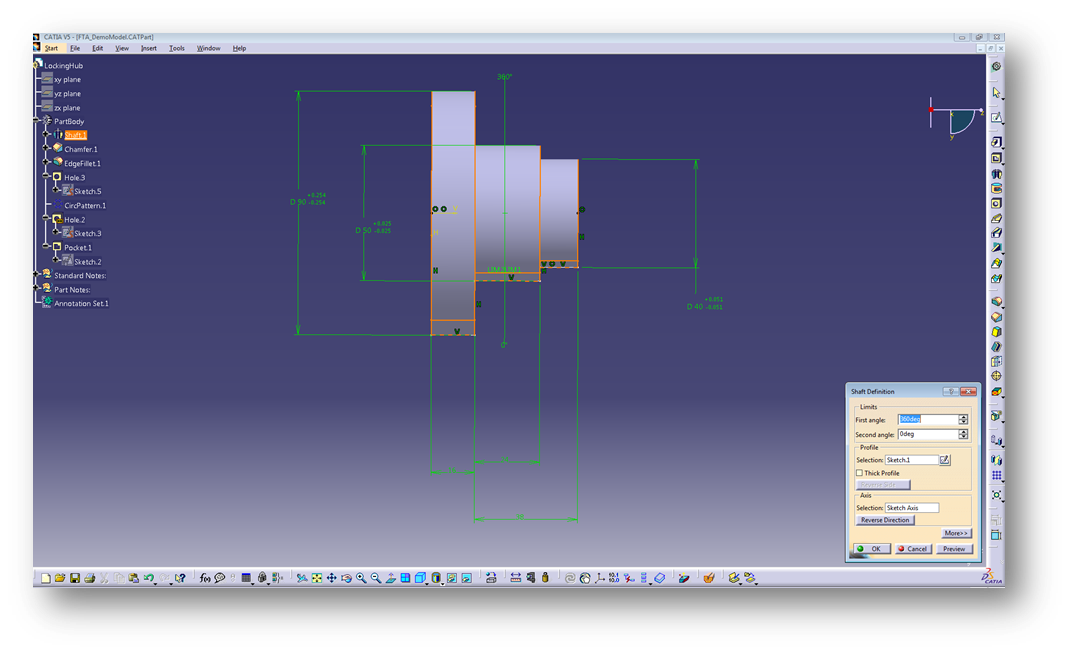Comparing ENOVIA DMU to a Base Seat of CATIA
The ENOVIA DMU viewer (aka DM1) has been an attractive product for the sales, quality, and shop floor employees in many of Inceptra’s customers. With its low price point, the compact set of functions makes the product lightweight and easy to use, especially for someone who simply needs to view, measure and markup native CATIA data.
As companies win bids and accelerate the growth of their project footprint, they find the need for additional functions that an entry level seat of CATIA (aka CAT) can bring, as opposed to simply having a DM1. This article outlines the benefits of using CAT versus DM1.
View associative FTA
CAT now offers the capability to view associative 3D annotations. In other words, you can see what geometry is associated to the annotation when clicking an annotation in the 3D. This helps relieve any doubt of what the annotation or dimension is referencing. This is helpful when looking at surface tolerances or redundant features that are called out with one annotation.
Functional Tolerance & Annotation (FTA) to Drawing
The ability to view FTA is a very nice capability, especially when all the needed information is there. However, a supplier who is receiving CATIA data containing FTA may find that important dimensions, annotations, and/or notes are often missing and there is no way for them to add annotations without a Functional Tolerance and Annotation license.
Since DM1 is just a viewer, it does not allow the ability to create a drawing. A CAT license will allow the user to open the FTA and transfer the 3D views to a 2D drawing. This ensures that customer data is not modified in any way. The dimensions and annotations on the drawing can then be adjusted in 2D, and additional dimensions and annotations can be created in the drawing accordingly.
Import & Export STEP/IGES files
The DM1 viewer does not have STEP or IGES import/export capabilities without additional plug-ins. On the other hand, the STEP/IGES translators are included with CAT, which makes exporting to downstream systems like CAM and CMM software very easy. In addition, there is certainly no need to buy a CATIA translator plug-in for your other downstream software if you can take advantage of STEP or IGES.
Quickly view “as-designed” dimensions
DM1 contains the same measuring capabilities as CAT, but CAT allows you to click on the part features to access the dimensions that already exist inside of sketches and features. This makes quoting and part reviews quick and simple because you do not have to insert the part in a DM1 product and manually create all the dimensions. In CAT, you can simply click each feature and take snapshots, using Tools > Image Capture, in order to make quick and simple documentation of your customer’s parts. Additionally, with some programming knowledge, many tasks such as documentation can be automated by creating a macro which leverages the included CATIA programming interfaces.
Conclusion
Historically, DM1 has been the tool of choice for those who need a simple method to view, measure, and markup native CATIA data. However, when it comes to additional functions such as working with STEP and IGES data, generating drawings for downstream applications, or quickly revealing existing feature dimensions and FTA associativity, an entry-level CAT license is a very compelling and cost-effective option.
Article compiled by Bryan Engle
Application Engineer
Inceptra



